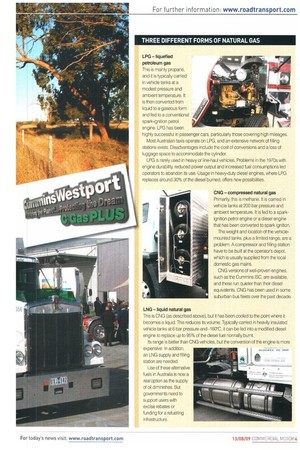THREE DIFFERENT FORMS OF NATURAL GAS
Page 45

If you've noticed an error in this article please click here to report it so we can fix it.
LPG — liquefied petroleum gas This is mainly propane, and it is typically carried in vehicle tanks at a modest pressure and ambient temperature. It is then converted from liquid to a gaseous form and fed to a conventional spark-ignition petrol engine. LPG has been highly successful in passenger cars, particularly those covering high mileages.
Most Australian taxis operate on LPG, and an extensive network of filling stations exists. Disadvantages include the cost of conversions and a loss of luggage space to accommodate the cylinder.
LPG is rarely used in heavy or line-haul vehicles. Problems in the 1970s with engine durability reduced power output and increased fuel consumptions led operators to abandon its use. Usage in heavy-duty diesel engines, where LPG replaces around 30% of the diesel burned, offers new possibilities.












































































































































